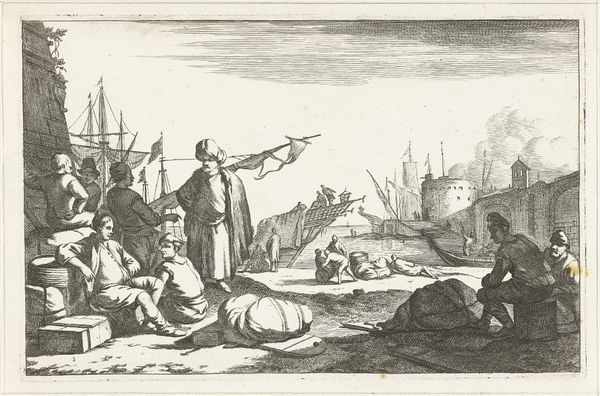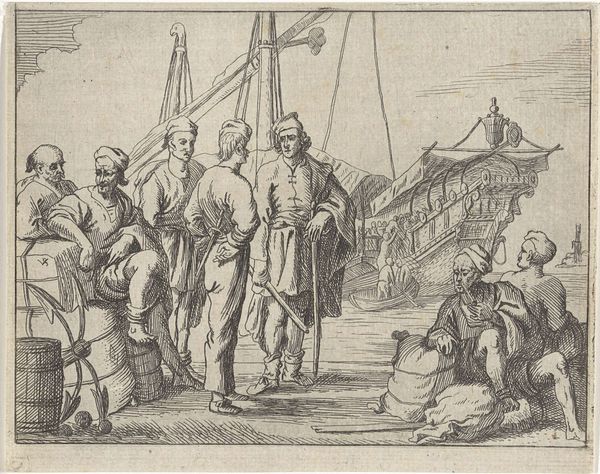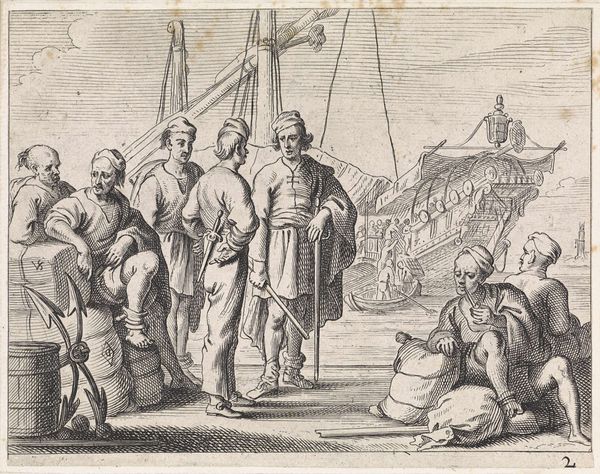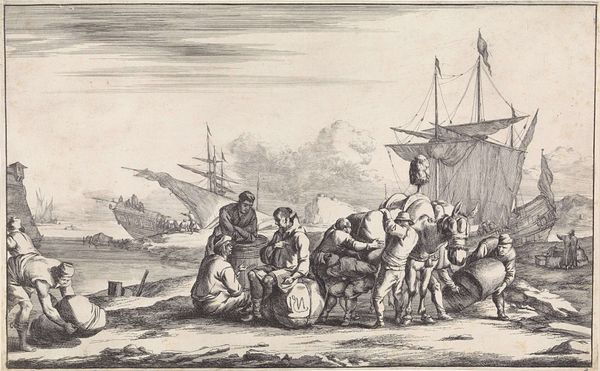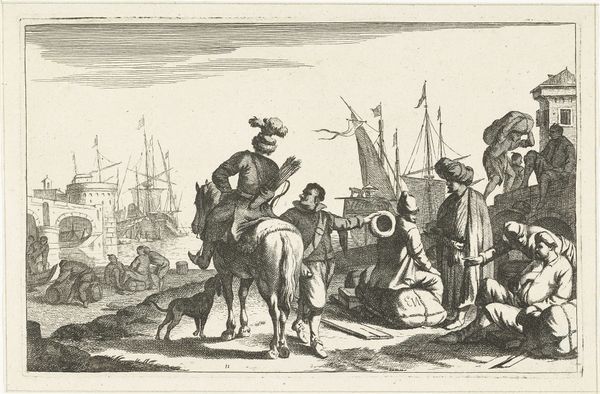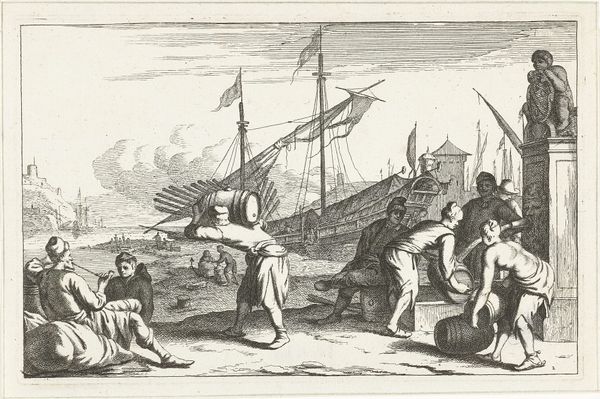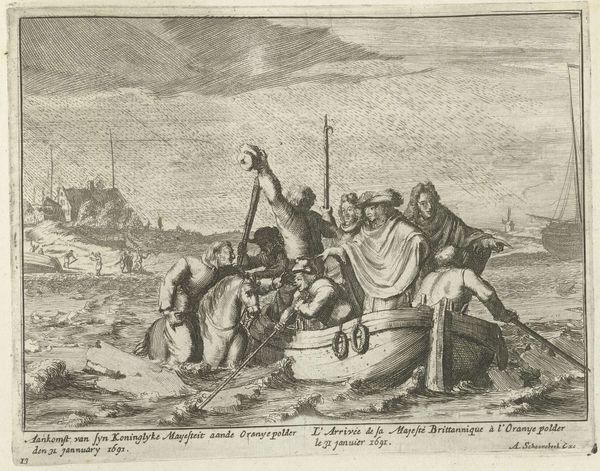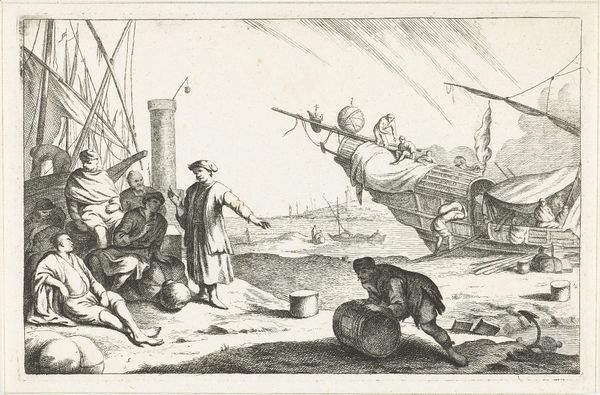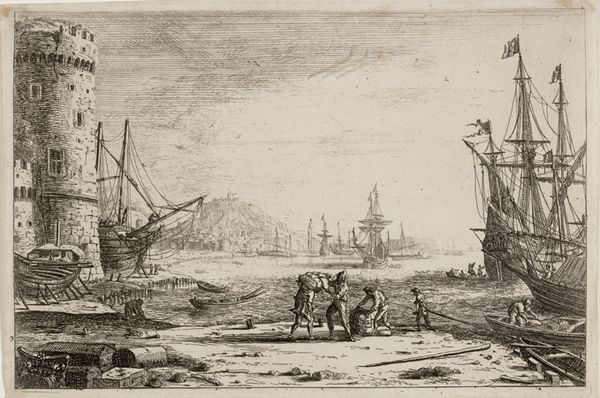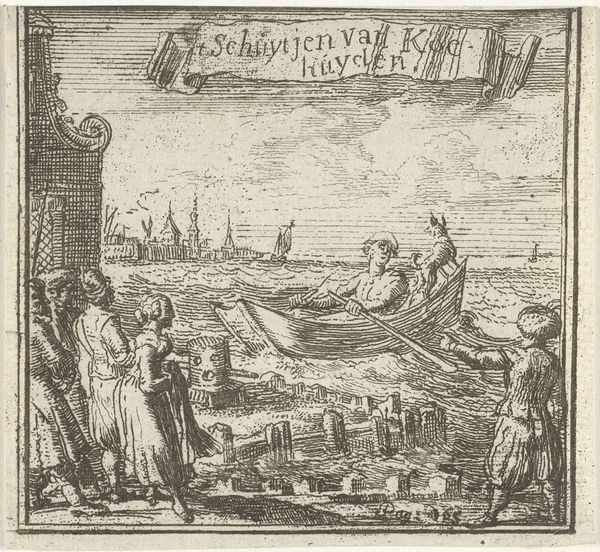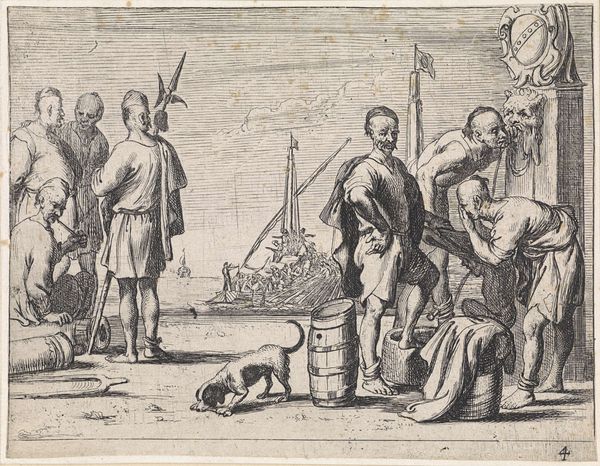
print, engraving
#
narrative-art
#
dutch-golden-age
# print
#
landscape
#
figuration
#
cityscape
#
genre-painting
#
history-painting
#
engraving
#
realism
Dimensions: height 154 mm, width 238 mm
Copyright: Rijks Museum: Open Domain
Curator: Here we see Johannes Gronsveld's engraving, "Haven met kooplieden en gevangenen," which roughly translates to "Harbor with Merchants and Prisoners," dating from somewhere between 1679 and 1728. Editor: It’s fascinating… I immediately notice the tension between freedom and confinement depicted. The bustling port contrasts sharply with the figures in chains. The overall effect evokes a strong sense of societal disparity. Curator: Yes, the artist masterfully used potent symbols. Notice the chained figures on the lower left: their position signifies not only physical captivity, but also their economic vulnerability within this mercantile society. Editor: And the composition reinforces that. The merchants stand upright, active, in command. The prisoners are slumped, passive, peripheral. This deliberate juxtaposition creates a visual power dynamic mirroring the social reality of the time. Curator: It’s interesting how he captures the complexities of trade. The harbor would have represented opportunity and prosperity to some, but as we see here, those benefits weren’t universally shared. Editor: Indeed. Looking closer, even seemingly neutral elements, like the ships in the harbor, carry layered meanings. The ship was an essential Dutch symbol of global expansion but also, unfortunately, of exploitation and the slave trade. The two sides of prosperity in that period were directly interlinked. Curator: Absolutely. It invites contemplation of our shared cultural memory. While on one hand the scene captures the hustle and bustle of a port city, the artist introduces the haunting reminder of exploitation. The contrast can cause much reflection on Dutch identity. Editor: Which I think makes this print so potent even now. It compels us to interrogate whose stories get centered in history. Where are the accounts of the marginalized, the enslaved, within this narrative of economic growth? The unbalance is the symbol. Curator: I agree. It encourages a critical examination of power, a virtue the artist conveys by way of realistic observation and potent symbolism. The dialogue between what is overtly shown and subtly hinted is the virtue in question. Editor: Ultimately, this deceptively simple harbor scene unpacks complex realities about the historical entanglement of trade, power, and oppression that we need to remember. It should serve as a continuous moment of collective introspection.
Comments
No comments
Be the first to comment and join the conversation on the ultimate creative platform.
